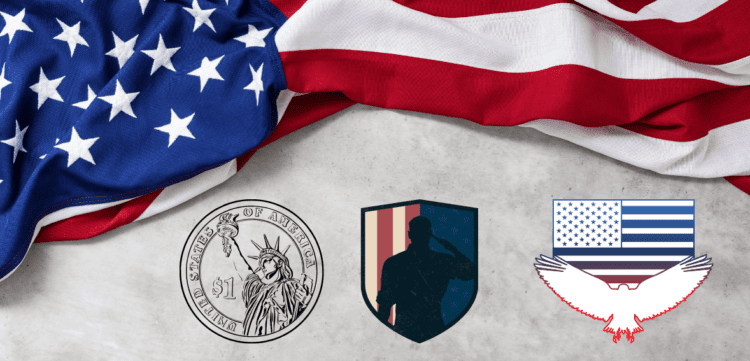American national symbols are more than just icons; they encapsulate the history, culture, and values of the United States. From the ubiquitous stars and stripes of the flag to the majestic Statue of Liberty, each symbol carries a story that reflects the nation’s journey and identity. This exploration delves into the origins and meanings of these icons, providing a deeper understanding of why they hold such significance in American hearts.
The Evolution of the American Flag
The American flag, often affectionately referred to as “Old Glory,” stands as a profound symbol of freedom and democracy, encapsulating key aspects of American symbols and meanings. Officially adopted by the Continental Congress on June 14, 1777, the flag has undergone numerous evolutions that reflect the dynamic growth and changing values of the nation. The original design featured 13 stripes and 13 stars to represent the 13 original colonies that declared independence from British rule.
Over the centuries, as the United States expanded, the flag’s design was modified to include new stars and occasionally adjust the stripes to accommodate new states. Each change in the flag’s design was a direct reflection of the country’s expanding borders and the increasing diversity of its people.
The current version of the flag was established in 1959 after Alaska and Hawaii became states. It features 50 stars, one for each state in the Union, showcasing the nation’s growth from the original 13 colonies. The 13 horizontal stripes—seven red and six white—continue to commemorate the original colonies. This layout ensures that the American flag not only serves as a visual representation of the nation’s history but also as a vibrant symbol of its ongoing commitment to the principles of liberty and unity.
The Bald Eagle as the National Bird

The bald eagle, a majestic and formidable bird, was officially adopted as the national bird of the United States in 1782. This choice was influenced by the eagle’s impressive longevity, formidable strength, and striking appearance, qualities that resonated with the young nation’s ideals and aspirations. Despite some opposition, notably from Benjamin Franklin who favored the turkey and criticized the eagle as having “bad moral character,” the bald eagle was selected for its powerful symbolism and regal presence.
The bald eagle’s role as a national symbol is deeply integrated into the fabric of American Symbols and Meanings. It is prominently featured on the Great Seal of the United States, where it holds a bundle of 13 arrows in one talon and an olive branch in the other, symbolizing the nation’s commitment to peace and readiness for war. Additionally, the eagle appears on various denominations of currency and other national insignia, reinforcing its status as an emblem of American sovereignty and the enduring spirit of freedom.
The decision to adopt the bald eagle as the national bird has stood the test of time, and today, it is revered not just for its physical attributes but as a living symbol of the nation’s values and its resilient democracy.
Words and Phrases on U.S. Coins
The inscriptions and motifs on U.S. coins are not merely decorative but are imbued with significant American Symbols and Meanings, reflecting the nation’s core ideals and historical narrative. Each phrase and image has been carefully selected to represent specific aspects of America’s identity and heritage. Among these, the phrase “E pluribus unum” (Out of many, one) is particularly emblematic. Originating from the concept of forging a single unified nation from a diverse collection of states, this motto underscores the United States’ foundational principle of unity and collective identity.
Another equally significant inscription is “In God We Trust.” This declaration highlights a widespread sentiment of reliance on divine guidance and has been a standard motto on U.S. currency since the 1950s, reflecting the country’s spiritual and religious underpinnings. Beyond these phrases, U.S. coins feature likenesses of past presidents and other national figures, which serve not only as a tribute to individual legacies but also as symbols of the democratic principles these leaders championed. Similarly, depictions of iconic buildings and monuments on coins do more than capture architectural beauty; they encapsulate moments of national pride and historical significance.
Together, these elements transform U.S. coins into miniature canvases of American heritage. Each coin tells a story of national values, achievements, and aspirations, literally placing the rich tapestry of American history in the palm of one’s hand. Through everyday transactions, these coins circulate the symbols and narratives of America, reinforcing and perpetuating the national identity with each exchange.
Uncle Sam: The Personification of the American Government

The iconic figure of Uncle Sam is deeply ingrained in American culture and serves as a vivid personification of the U.S. government. This character, often depicted with striking white hair and a suit adorned with stars and stripes, traces its origins back to the early 19th century, specifically during the War of 1812. The name “Uncle Sam” itself is derived from Samuel Wilson, a meat packer from Troy, New York. Wilson provided barrels of beef to the U.S. Army, marking them with “U.S.” for United States. Over time, soldiers began associating the abbreviation with Wilson’s own nickname, “Uncle Sam,” thus giving birth to a lasting symbol of national governance.
This connection was further cemented during World War I when artist James Montgomery Flagg utilized the image of Uncle Sam in his famous recruiting posters. Flagg’s depiction, which showed Uncle Sam pointing directly at the viewer with a stern message, “I Want YOU for U.S. Army,” became an unforgettable part of American military propaganda. Through Flagg’s artistic vision, Uncle Sam evolved from a mere nickname into a powerful symbol of national identity and governmental authority. This imagery not only reinforced Uncle Sam’s status as an enduring icon but also highlighted its role in embodying the American Symbols and Meanings.
Over the decades, Uncle Sam has become more than just a representation of the government; he is a symbol of American patriotism and a figure of authority, often used in various forms of media and public discourse to invoke a sense of duty and national pride among Americans.
The National Anthem’s Stirring History
“The Star-Spangled Banner,” the United States’ national anthem, is deeply embedded in the tapestry of American Symbols and Meanings. Its creation dates back to the tumultuous days of the War of 1812 when Francis Scott Key, held aboard a British ship, witnessed the relentless bombardment of Fort McHenry. Despite the explosive assaults that lasted through the night, Key saw the American flag, not just intact but defiantly fluttering at dawn. Moved by this stirring symbol of endurance and unity, Key penned the initial lines of what would become a national treasure.
The lyrics of “The Star-Spangled Banner” were originally paired with the melody of “To Anacreon in Heaven,” a popular English drinking song, which lent the words a familiar and unifying tune. Over the years, the song was recognized for its powerful depiction of resilience and hope. It was officially designated as the United States’ national anthem on March 3, 1931, by President Herbert Hoover.
Today, the anthem is a staple at many public gatherings, particularly before the start of sports events across the country. It serves as a poignant reminder of the nation’s struggles, victories, and the enduring values that continue to guide it. The anthem’s role extends beyond mere tradition; it is an invocation of national pride and a collective memory of the American spirit’s resilience.
The Statue of Liberty: A Beacon of Freedom

The Statue of Liberty, an iconic emblem of freedom and democracy, graces New York Harbor with its towering presence. This magnificent sculpture was a generous gift from France to the United States in 1886, symbolizing the enduring friendship and shared values between the two nations. The statue was intricately designed by French sculptor Frédéric Auguste Bartholdi, who meticulously crafted its colossal form to inspire awe and admiration.
Bartholdi’s vision was brought to life with the help of Gustave Eiffel, the mastermind behind the Eiffel Tower, who engineered the statue’s internal support structure. This innovative framework allows the statue to stand firm against the harsh winds and weather conditions of the harbor. The Statue of Liberty depicts a robed female figure representing Libertas, the Roman goddess of freedom. She holds a torch above her head with her right hand, and in her left hand, she carries a tabula ansata inscribed with the date of the American Declaration of Independence, July 4, 1776.
As the statue was erected on Liberty Island, it quickly became a beacon for millions of immigrants arriving in America, symbolizing hope and the potential for a new life. For many, the Statue of Liberty was the first glimpse of the United States, embodying the ideals of freedom and the opportunity for prosperity. Over the years, it has remained a powerful symbol, celebrated in numerous cultural references and continuing to draw visitors from around the world, eager to witness this monument to liberty and freedom firsthand.
The National Tree, Flower, and Mammal
In 2004, the oak tree was officially designated as the national tree of the United States following a nationwide vote that recognized its symbolic representation of strength and endurance. This decision highlighted the oak’s ubiquitous presence and storied role in American history, serving not only as a material for building but also as a symbol in numerous folklore and historical narratives. The oak is celebrated for its robustness and longevity, qualities that resonate with the American ethos of resilience and growth.
Similarly, the rose was declared the national flower in 1986, chosen for its widespread beauty and its role in various cultural and social events across the country. The rose, with its delicate blooms and diverse varieties, encapsulates beauty, grace, and complexity. It holds a special place in American gardens and is often used in ceremonies and celebrations, symbolizing love, honor, and devotion.
In a more recent designation, the American bison became the national mammal in 2016. This recognition came as part of broader efforts to acknowledge and conserve the species, which once roamed North America in vast herds and played a crucial ecological and cultural role in the lives of many Native American tribes. The bison’s designation as the national mammal underscores America’s dedication to preserving its wildlife and natural heritage, reflecting a national commitment to environmental stewardship and respect for the country’s rich biodiversity.
Conclusion
The tapestry of American national symbols, rich with history and significance, serves as a profound reflection of the nation’s identity, values, and aspirations. From the enduring stripes of the American flag to the steadfast gaze of the bald eagle, each symbol weaves a narrative of resilience, unity, and liberty. The evolution of these symbols over time mirrors the dynamic growth and diversity of the country, reminding us of the foundational principles that continue to guide the United States.
Through everyday objects like coins, and monumental figures like Uncle Sam and the Statue of Liberty, these symbols transcend mere representations; they inspire, unite, and educate. They are not only fixtures of national pride but also active participants in the ongoing American story. They serve as reminders of where the nation has been, the struggles it has endured, and the ideals it strives to uphold.
As we reflect on the stories behind these symbols, we are reminded of the collective journey of a nation that values freedom and seeks to offer hope and opportunity. Whether it is through the solemn strains of “The Star-Spangled Banner” or the welcoming torch of the Statue of Liberty, these symbols stand not just as icons of the past, but as beacons for the future. They encourage ongoing dialogue about what it means to be American and challenge us to live up to the ideals embedded within these powerful emblems.
In understanding and appreciating these symbols, we recognize not just the complexities of a nation’s history, but also the enduring spirit of its people. As we continue to navigate the challenges of the present and future, these symbols serve as a compass, guiding the United States towards a continued commitment to the principles of democracy, freedom, and unity. In this way, the national symbols of America are not only markers of where the nation has been but also signposts pointing towards what it aspires to be.
Frequently Asked Questions:
What does each stripe on the American flag represent?
Each of the 13 horizontal stripes on the American flag represents one of the original colonies that declared independence from British rule. The stripes are alternately red and white, symbolizing hardiness and valor (red) and purity and innocence (white).
Why was the bald eagle chosen as the national bird of the United States?
The bald eagle was chosen as the national bird in 1782 due to its long life, great strength, and majestic looks, which resonated with the nation’s leaders as emblematic of the ideals and aspirations of the United States. Despite some dissent (notably from Benjamin Franklin), the eagle was preferred over the turkey because it was seen as a symbol of authority and sovereignty.
What is the significance of the phrase “E pluribus unum” on U.S. coins?
The phrase “E pluribus unum,” Latin for “Out of many, one,” reflects the foundational American principle of unity among diversity. Originally referring to the union formed by the separate states, it has come to symbolize the melting pot of cultures, peoples, and values that constitute the United States.
How did the Statue of Liberty come to be a symbol of American freedom?
The Statue of Liberty was gifted to the United States by France in 1886 as a symbol of friendship and shared ideals of liberty and democracy. Standing at the entrance to New York Harbor, it became a welcoming sight for millions of immigrants coming to America, symbolizing new opportunities and freedom from oppression. Its presence and the values it stands for have made it an enduring icon of freedom and hope globally.













